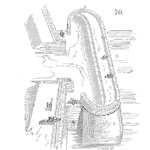
I’m about to leave on a long trip and much of it without internet. So, this post and the next couple are homework for you. Take a look, work the problem, solve it, then show your work. Comment with why you chose your response and why you didn’t select one of the others.
This is question 16 from the ASQ CRE 2009 sample exam.
- The hazard rate function for a device is given by
0.001 if t ² 10 hours and
0.010 if t > 10 hours
What is the reliability of this device at 12 hours?
(A) 0.970
(B) 0.980
(C) 0.988
(D) 0.990
Many times the wrong answers look correct if you make a slight error in your setup or calculation – bonus if you can determine the error that leads to the wrong response.
Related:
Top 10 CRE Exam Preparation Tips (article)
Reliability from Hazard step function (article)
Common formulas (article)
Can I use Dynamic Reliability for this?
BOK IV.A.5
R(t)sys = R(t)1 .R(t)2
= exp -(λ1 t1) .exp -(λ2 t2)
= exp -(0.001 x 10) exp -(0.01 x 2)
= exp -0.01 . exp -0.02
= 0.99005 x 0.980199
= 0.9704
Answer A –> correct answer
Answer B = R(t)2 =0.980199
Answer D = R(t)1 = 0.99005
Answer C = R(t)1+2 = exp -(λ1 12) = exp -(0.001 x 12) = 0.9880 (only used the λ1 and total time)
Of course the exercise is:
0.001 if t ≤ 10 hours and 0.010 if t > 10 hours.
iso
0.001 if t ² 10 hours and 0.010 if t > 10 hours
The ² should be a ≤
Don’t know if this is the correct approach, but I followed a time-averaging schema.
1) I first recognized that this is a hazard function for an Exponential Distribution.
2) lamda_avg = ((0.001)(10 hrs) + (0.01)(12-10 hrs)) / 12 hr = 0.0025
3) R(12 hrs) = exp(-0.0025 * 12) = 0.9704